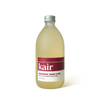How to remove pollen stains
Cut flowers may brighten your day, but can also leave fabrics with pollen stains, with lilies among the worst culprits. Whether you’ve brushed your sleeve or stained your carpet, with the right know-how, pollen is easier to remove than you think. Read on to find out how. For other common stains, check out our definitive 101 stain removal guide.
Step #1: shake off the pollen
Though it might seem like the natural thing to do, don’t touch the pollen, or try to brush or wipe it off with your hands: doing so will only set the powdery substance, setting it deeper into the pile or weave of fabrics. For the same reason, don’t run it under water either. The trick to removing pollen is to shake or lift it from the fabric as much as possible before laundering. If possible, start by shaking the stained item outdoors, holding the affected area face down so the pollen can’t fall onto other areas of the clothing or onto carpet.
Step #2: gently lift with tape

Image source: The Spruce
Wrap some scotch or masking tape around your fingers, then gently press the sticky side onto the stain to lift the pollen from the fabric’s surface. Most of the pollen should come up with the tape as you pat it (you can also use sticky tape to remove other powdery, delicate things, such as spider webs, crumbs and pet hairs). This approach is usually more effective if the pollen has already been rubbed into the fabric. If you prefer though, or if you have no sticky tape to hand, use your vacuum cleaner’s crevice to suck up the pollen.
Step #3: rinse, soak, rinse
Run cold water through the back of the fabric to rinse the stained area and encourage the pollen barbs and hooks to detach themselves. When you’ve removed as much as you can by rinsing, soak the item in a tub or sink for 30 minutes. After rinsing and soaking, flush water through the fabric again to force more pollen out through the front. For carpets, gently blot the stain with a damp cloth, working from the edges towards the middle.
Step #4: wash with a liquid laundry detergent
 Gently rub a liquid laundry detergent, like Kair, into the affected area, letting it sit for 15 minutes and break down any remaining pollen. Then launder in the warmest water recommended for the fabric (for delicates like wool and silk, that means no more than 30ºC). We recommend avoiding mainstream enzyme-based detergents containing harsh ingredients like bleaching agents, optical brighteners and enzymes, which are detrimental to fabric integrity, strength, shape and colour. If there’s any remaining pollen residue or colour, soak in a solution of distilled white vinegar, then launder as normal once more.
Gently rub a liquid laundry detergent, like Kair, into the affected area, letting it sit for 15 minutes and break down any remaining pollen. Then launder in the warmest water recommended for the fabric (for delicates like wool and silk, that means no more than 30ºC). We recommend avoiding mainstream enzyme-based detergents containing harsh ingredients like bleaching agents, optical brighteners and enzymes, which are detrimental to fabric integrity, strength, shape and colour. If there’s any remaining pollen residue or colour, soak in a solution of distilled white vinegar, then launder as normal once more.
Step #5: air dry (and repeat)
Air dry the item - outside in direct sunlight, if possible - avoiding tumble dryers at all costs (the heat will only set any pollen residue, and also damage the fabric’s fibres). Direct sunlight works wonders on many pollen stains, especially from light-coloured pollen. Lay woollen items flat in their natural shape, but hang other fabrics (tops from the bottom, bottoms from the top). If, after air drying, you can still spot a trace, leave the item in the sun for a day or two to further erase the stain before repeating the stain removal process, though take care with dark-coloured items - too much light can cause fading over time.
Step #6: blot with rubbing alcohol
 Pollen stains can be stubborn, so may need several treatments to completely disappear. If neither detergent nor sunlight vanquish the stain, try applying rubbing alcohol (a.k.a. ethanol - also great for removing oil-based ink from clothes). Blot with a clean white cloth, then rinse thoroughly before laundering. Always test for colour fastness first, though, by spot-testing the solvent on an inconspicuous area of the stained garment.
Pollen stains can be stubborn, so may need several treatments to completely disappear. If neither detergent nor sunlight vanquish the stain, try applying rubbing alcohol (a.k.a. ethanol - also great for removing oil-based ink from clothes). Blot with a clean white cloth, then rinse thoroughly before laundering. Always test for colour fastness first, though, by spot-testing the solvent on an inconspicuous area of the stained garment.
Follow these simple steps, repeating them if necessary, for perfectly pollen-free fabrics. Prevention is always better than cure, though, so if you’re dealing with pollen-laden cut flowers, like lilies, we recommend removing the stamen before arranging in a vase. Simply hold each flower over the sink and pinch or snip off the stamen using fine, sharp scissors. That way, you can avoid picking up powdery pollen stains in the first place!
Cover image by Burst




















